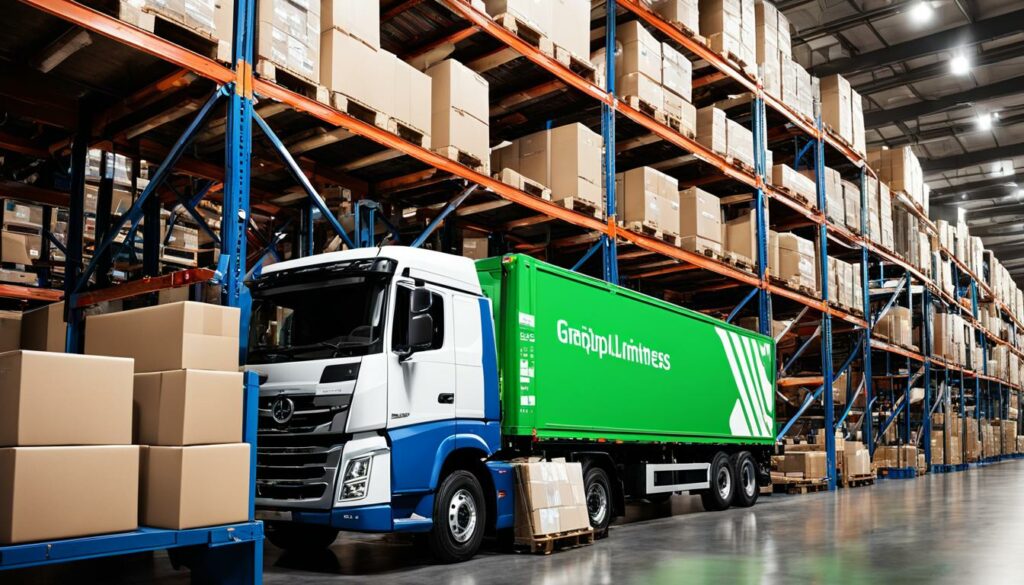Consumers spend around $500 billion shopping online each year, leading to continued e-commerce growth. Fulfillment costs are an increasingly important factor for e-commerce businesses. These costs encompass various fees associated with the fulfillment process, including setup fees, intake fees, storage fees, pick and pack fees, shipping fees, kitting fees, return fees, and account management fees. The fulfillment cost for any given item may include a combination of these fees. Different third-party logistics providers (3PLs) and fulfillment companies use different pricing models, such as cubic foot, order, shipment, or unit-based models.
Calculating fulfillment costs requires a meticulous analysis of the fulfillment provider’s rates, the number of pallets, orders, and units per order, as well as the total fees for each line item. By comparing the costs of handling fulfillment in-house versus outsourcing to a 3PL, businesses can make cost-saving decisions. Understanding and optimizing fulfillment costs not only impact a business’s bottom line but also contribute to its overall profitability and competitive advantage in the e-commerce industry.
Key Takeaways:
- Fulfillment costs in e-commerce encompass various fees associated with the fulfillment process.
- These costs include setup fees, intake fees, storage fees, pick and pack fees, shipping fees, kitting fees, return fees, and account management fees.
- Calculating fulfillment costs requires considering the pricing models used by different 3PLs and fulfillment companies.
- Comparing in-house fulfillment costs to outsourcing costs can help businesses make cost-effective decisions.
- Optimizing fulfillment costs can lead to higher profitability and competitive advantage.
The Definition of Fulfillment Costs
Fulfillment costs are the expenses incurred in the process of receiving, storing, and fulfilling orders within the e-commerce industry. These costs can vary depending on several factors, including the type of business, order volume, inventory types, and processing speed. Fulfillment costs typically encompass a range of fees, such as setup fees, intake fees, storage fees, pick and pack fees, shipping fees, kitting fees, return fees, and account management fees. These fees contribute to the overall fulfillment cost for each item or order.
Third-party fulfillment logistics services play a crucial role in managing and handling fulfillment costs for e-commerce businesses. By outsourcing fulfillment operations to these specialized providers, businesses can leverage their expertise and infrastructure to streamline order fulfillment and optimize cost efficiency.
In order to effectively analyze and manage fulfillment costs, businesses need to conduct a comprehensive fulfillment cost analysis. This involves evaluating the individual fees associated with each aspect of the fulfillment process and assessing their impact on the overall cost structure. By understanding and optimizing these costs, businesses can make informed decisions to improve their financial performance and competitiveness in the market.
“Fulfillment costs encompass the expenses of receiving, storing, and processing orders in the e-commerce industry. These costs can be influenced by factors such as business type, order volume, inventory, and processing speed. By conducting a thorough analysis of these costs, businesses can optimize their fulfillment operations and enhance their bottom line.”
To provide a clear understanding of the different fees involved in fulfillment costs, the table below outlines the common cost components:
| Fulfillment Cost Components | Description |
|---|---|
| Setup Fees | The initial charges associated with setting up a fulfillment account and integrating systems. |
| Intake Fees | The fees for receiving and inspecting incoming inventory, including unboxing, labeling, and quality checks. |
| Storage Fees | The charges for housing and storing inventory within a fulfillment center, typically calculated based on the occupied space or volume. |
| Pick and Pack Fees | The costs associated with picking products from storage, packing them into appropriate shipping packages, and preparing them for shipment. |
| Shipping Fees | The expenses for shipping and delivering orders to customers, taking into account various factors such as package weight, dimensions, and destination. |
| Kitting Fees | The charges for assembling and packaging multiple items together as kits or bundles. |
| Return Fees | The costs incurred when managing product returns, including restocking, inspection, and processing. |
| Account Management Fees | The ongoing charges for managing and maintaining a fulfillment account, including customer support and account-related services. |
By comprehensively analyzing these fulfillment cost components, businesses can gain valuable insights into their cost structure and identify opportunities for cost optimization. Furthermore, understanding the impact of these costs on the overall profitability allows businesses to make data-driven decisions and implement strategies that improve their bottom line.

Calculating Fulfillment Costs
In order to accurately determine the fulfillment costs for your e-commerce business, it is important to consider various factors and fees. By analyzing these elements, you can gain a comprehensive understanding of your fulfillment cost analysis, allowing you to make informed decisions and reduce overall fulfillment costs.
Firstly, you need to take into account the rates provided by your chosen fulfillment provider. These rates may vary depending on the specific services you require, such as setup, intake, storage, pick and pack, shipping, kitting, return, and account management fees.
Additionally, it is essential to consider the volume of your operations, including the number of pallets, orders, and units per order. By accurately estimating your expected volume, you can more effectively calculate your fulfillment costs.
An accurate estimation of fulfillment costs can only be achieved by gathering precise figures and fees. To simplify this process, some fulfillment providers offer cost calculators that allow businesses to input specific fees and services, providing a clear breakdown of the total fulfillment costs.
One effective strategy for reducing fulfillment costs is to compare the expenses associated with in-house fulfillment versus outsourcing to a third-party logistics provider. By conducting a thorough cost analysis, you can determine the most cost-effective option for your business.
Reducing fulfillment costs can have a significant impact on the overall financial performance and profitability of your e-commerce business. By calculating these costs accurately and exploring strategies to minimize expenses, you can achieve a more streamlined and efficient fulfillment process.
By optimizing your fulfillment operations and actively seeking cost-saving opportunities, you can reduce fulfillment costs and allocate resources more efficiently. This, in turn, allows your business to invest in other crucial areas such as product development and marketing.
| Factors to Consider | Key Considerations |
|---|---|
| Fulfillment Provider Rates | Gather information on rates for specific services |
| Volume of Operations | Consider the number of pallets, orders, and units per order |
| Fulfillment Fees | Accurately estimate setup, intake, storage, pick and pack, shipping, kitting, return, and account management fees |
| Cost Comparison | Analyze in-house fulfillment costs versus outsourcing options |
Reducing fulfillment costs is an ongoing process that requires continuous monitoring and optimization. By implementing these strategies and embracing a cost-effective fulfillment solution, you can maximize profitability and strengthen your competitive advantage in the e-commerce industry.
The Importance of Fulfillment Costs in Ecommerce
Fulfillment costs are a critical factor in the success of an ecommerce business. They have a direct impact on the bottom line and can significantly influence profitability. By understanding and optimizing fulfillment costs, businesses can improve their financial performance and gain a competitive edge in the market.
Reducing fulfillment costs is essential for enhancing profitability. By implementing cost-effective fulfillment solutions, businesses can minimize expenses and increase their profit margin. This, in turn, allows them to allocate resources more efficiently, invest in product development, and implement effective marketing strategies.
Proper management of fulfillment costs enables businesses to optimize their operations and improve overall efficiency. By streamlining the fulfillment process, businesses can reduce unnecessary expenses and enhance customer satisfaction. This can lead to increased customer loyalty and higher order volumes, further boosting profitability.
The Benefits of Reducing Fulfillment Costs:
- Higher Profitability: Minimizing fulfillment expenses directly contributes to increased profitability, as it allows businesses to generate more revenue from each sale.
- Competitive Advantage: By offering competitive pricing and efficient fulfillment services, businesses can differentiate themselves in the market and attract more customers.
- Resource Allocation: Cost-effective fulfillment solutions enable businesses to allocate their resources more strategically, focusing on areas such as product development and marketing.
- Customer Satisfaction: Efficient fulfillment processes result in faster delivery times and improved customer experience, leading to higher customer satisfaction and repeat purchases.
“Implementing cost-effective fulfillment solutions is not just about reducing expenses; it’s about optimizing operations and enhancing profitability.”
Reducing fulfillment costs requires careful analysis and strategic decision-making. Businesses need to evaluate their current fulfillment processes, identify areas for improvement, and implement appropriate solutions. This may involve leveraging technology and automation, negotiating volume discounts with fulfillment providers, or adopting inventory management systems that minimize storage costs.
Example of Fulfillment Cost Analysis:
| Fulfillment Cost Category | Cost Breakdown |
|---|---|
| Setup Fees | $1,000 |
| Intake Fees | $500 |
| Storage Fees | $2,000 |
| Pick and Pack Fees | $3,500 |
| Shipping Fees | $4,000 |
| […] | […] |
By analyzing the breakdown of fulfillment costs, businesses can identify areas where expenses can be reduced. This analysis helps in making informed decisions and implementing cost-effective fulfillment solutions to improve profitability.

Strategies to Improve Fulfillment Costs
When it comes to reducing fulfillment costs and optimizing efficiency, businesses can implement several strategies. By adopting these strategies, businesses can streamline their operations, minimize expenses, and provide cost-effective fulfillment solutions for their customers.
- Optimize Order Processes: Streamlining and automating order processes can significantly improve fulfillment costs. By implementing efficient order management systems and optimizing order routing, businesses can eliminate bottlenecks and reduce fulfillment time.
- Implement Efficient Inventory Management Systems: Proper inventory management is crucial for reducing fulfillment costs. By leveraging inventory management systems that provide real-time data and insights, businesses can minimize stockouts, prevent overstocking, and improve overall inventory accuracy.
- Leverage Technology and Automation: Embracing technology and automation can drive cost-effective fulfillment. By implementing automated warehouse systems, barcode scanning technology, and robotic automation, businesses can improve order accuracy, reduce manual labor, and optimize warehouse space.
- Negotiate Volume Discounts with Fulfillment Providers: Establishing strong partnerships with fulfillment providers allows businesses to negotiate favorable pricing based on order volumes. By leveraging volume discounts, businesses can further drive down fulfillment costs and improve their bottom line.
- Analyze Data to Identify Cost-Saving Opportunities: Analyzing data is crucial for identifying areas of improvement. By examining fulfillment data, businesses can uncover cost-saving opportunities, optimize shipping routes, and identify any inefficiencies in the fulfillment process.
- Continuously Monitor and Optimize Fulfillment Operations: Fulfillment costs can fluctuate over time. Regularly monitoring and analyzing key performance indicators (KPIs) such as order accuracy, order cycle time, and shipping costs allows businesses to identify areas for improvement and continuously optimize their fulfillment operations.
| Strategies | Benefits |
|---|---|
| Optimize Order Processes | Streamlined operations and reduced fulfillment time |
| Implement Efficient Inventory Management Systems | Minimized stockouts, improved inventory accuracy |
| Leverage Technology and Automation | Improved order accuracy, reduced manual labor |
| Negotiate Volume Discounts with Fulfillment Providers | Lowered fulfillment costs through favorable pricing |
| Analyze Data to Identify Cost-Saving Opportunities | Uncovered cost-saving opportunities and optimized shipping routes |
| Continuously Monitor and Optimize Fulfillment Operations | Identified areas for improvement and optimized fulfillment processes |
By implementing these strategies, businesses can drive down fulfillment costs while maintaining a high level of service. To remain competitive in the ever-evolving e-commerce landscape, it is crucial for businesses to continuously evaluate their fulfillment operations and seek opportunities for improvement.

Customer Behavior and Fulfillment Costs
Customer behavior plays a crucial role in shaping fulfillment costs for e-commerce businesses. By understanding and analyzing customer preferences and behaviors, businesses can optimize their fulfillment operations to reduce costs and improve efficiency.
Analyzing order patterns and trends enables businesses to anticipate demand and streamline inventory management. This helps minimize stockouts and the need for rush orders, effectively reducing fulfillment costs. By aligning inventory levels with customer demand, businesses can optimize warehouse space utilization and minimize storage fees.
One effective strategy to reduce fulfillment costs is to incentivize customers to choose cost-effective shipping options. By highlighting and promoting options like standard shipping or consolidated orders, businesses can steer customers towards more budget-friendly shipping methods, resulting in lower fulfillment costs. Offering free shipping thresholds can also encourage larger order sizes, optimizing fulfillment efficiency and reducing per-order costs.
In addition to shipping incentives, providing clear and accurate delivery estimates is essential. By managing customer expectations and minimizing delays, businesses can prevent costly returns or exchanges resulting from missed delivery timelines. Accurate estimates also enhance customer satisfaction and loyalty, leading to repeat purchases and positive word-of-mouth referrals.
Understanding customer behavior is crucial in optimizing fulfillment costs. By leveraging data and implementing strategies to align with customer preferences, businesses can reduce expenses, improve efficiency, and ultimately enhance their competitive edge in the e-commerce landscape.

Benefits of Analyzing Customer Behavior
When businesses analyze customer behavior and align their fulfillment processes accordingly, several benefits can be realized:
- Improved demand forecasting and inventory management
- Reduced stockouts and rush orders
- Optimized warehouse space utilization
- Minimized storage fees
- More cost-effective shipping options chosen by customers
- Lower fulfillment costs per order
- Prevention of costly returns or exchanges
- Enhanced customer satisfaction and loyalty
Key Takeaways
Customer behavior has a significant impact on fulfillment costs in the e-commerce industry. By understanding customer preferences, businesses can optimize their fulfillment operations and reduce costs. Analyzing order patterns, incentivizing cost-effective shipping options, and providing accurate delivery estimates are effective strategies to minimize fulfillment expenses and enhance customer satisfaction.
Challenges and Considerations in Managing Fulfillment Costs
Managing fulfillment costs can be a daunting task for businesses in the e-commerce industry. The complex nature of fulfillment operations often presents various challenges that require careful consideration. One of the main challenges is finding the delicate balance between cost and speed. While speedy order fulfillment is essential for customer satisfaction, it can significantly impact fulfillment costs. Implementing efficient processes and leveraging technology can help strike the right balance.
Another challenge businesses face is dealing with unpredictable demand fluctuations. The e-commerce landscape is dynamic, and demand patterns can change rapidly. Sudden spikes or drops in demand can result in inefficiencies and increased costs. Employing data analysis and forecasting techniques can help businesses anticipate demand fluctuations and optimize inventory levels, reducing fulfillment costs in the process.
Efficiently handling returns and exchanges is another consideration in managing fulfillment costs. Returns and exchanges are an unavoidable part of e-commerce, and managing them effectively can be challenging. Streamlining the returns process, implementing clear return policies, and providing proactive customer support can help minimize the financial impact of returns, thereby reducing overall fulfillment costs.
Choosing the right fulfillment provider is crucial for cost-effective fulfillment solutions. Businesses must carefully evaluate different providers based on their capabilities, reliability, pricing structures, and ability to scale. While outsourcing to a third-party logistics provider can offer cost savings and expertise, businesses should also consider the trade-offs and assess whether in-house fulfillment might be a viable option. Continuously evaluating and optimizing fulfillment processes is key to adapt to changing market conditions and evolving customer expectations while keeping fulfillment costs in check.
FAQ
What are fulfillment costs in ecommerce?
Fulfillment costs in ecommerce refer to the expenses associated with receiving, storing, and processing orders for products. These costs include setup fees, intake fees, storage fees, pick and pack fees, shipping fees, kitting fees, return fees, and account management fees.
How can I calculate fulfillment costs?
To calculate fulfillment costs, you need to consider various factors and fees. These include the fulfillment provider’s rates, the number of pallets, orders, and units per order, and the fees for setup, intake, storage, pick and pack, shipping, kitting, return, and account management. Accurate estimation requires gathering precise figures and fees.
Why are fulfillment costs important in ecommerce?
Fulfillment costs are important in ecommerce because they affect a business’s profitability. By understanding and optimizing these costs, businesses can improve their financial performance and gain a competitive advantage. Minimizing fulfillment expenses through cost-effective solutions allows businesses to allocate resources more efficiently.
What strategies can I use to improve fulfillment costs?
To improve fulfillment costs, you can optimize order processes, implement efficient inventory management systems, leverage technology and automation, negotiate volume discounts with fulfillment providers, analyze data to identify cost-saving opportunities, and continuously monitor and optimize fulfillment operations.
How does customer behavior impact fulfillment costs?
Understanding customer preferences and behaviors can help optimize fulfillment operations. Analyzing order patterns and trends allows businesses to anticipate demand, reduce stockouts, and minimize rush orders. Offering incentives for customers to choose cost-effective shipping options can also help reduce fulfillment costs.
What challenges should I consider in managing fulfillment costs?
Managing fulfillment costs can be challenging. Some common challenges include balancing cost and speed, dealing with unpredictable demand fluctuations, handling returns and exchanges efficiently, managing inventory effectively, and selecting the right fulfillment provider. Businesses should continuously evaluate and optimize processes to adapt to changing market conditions and customer expectations.
